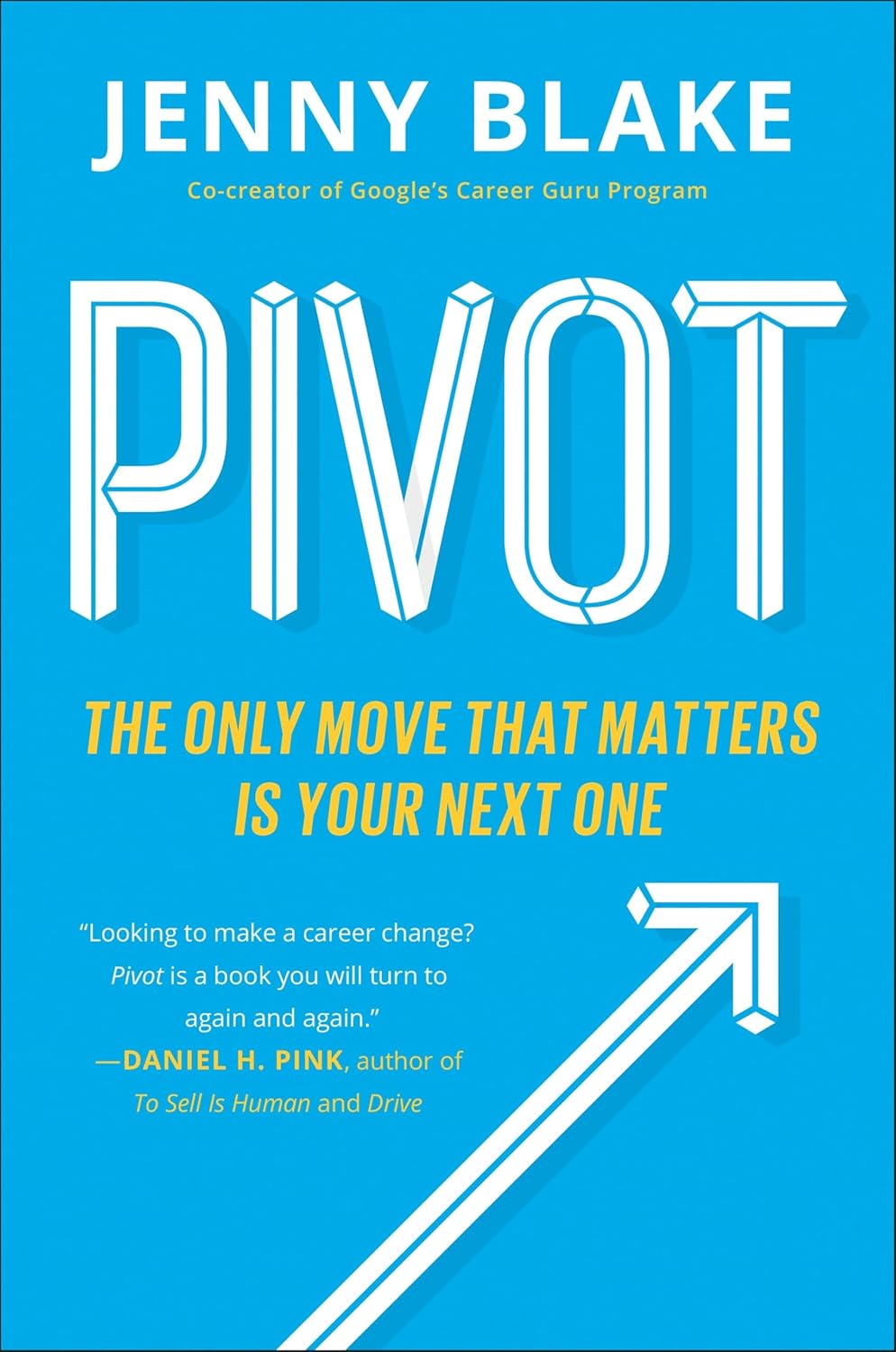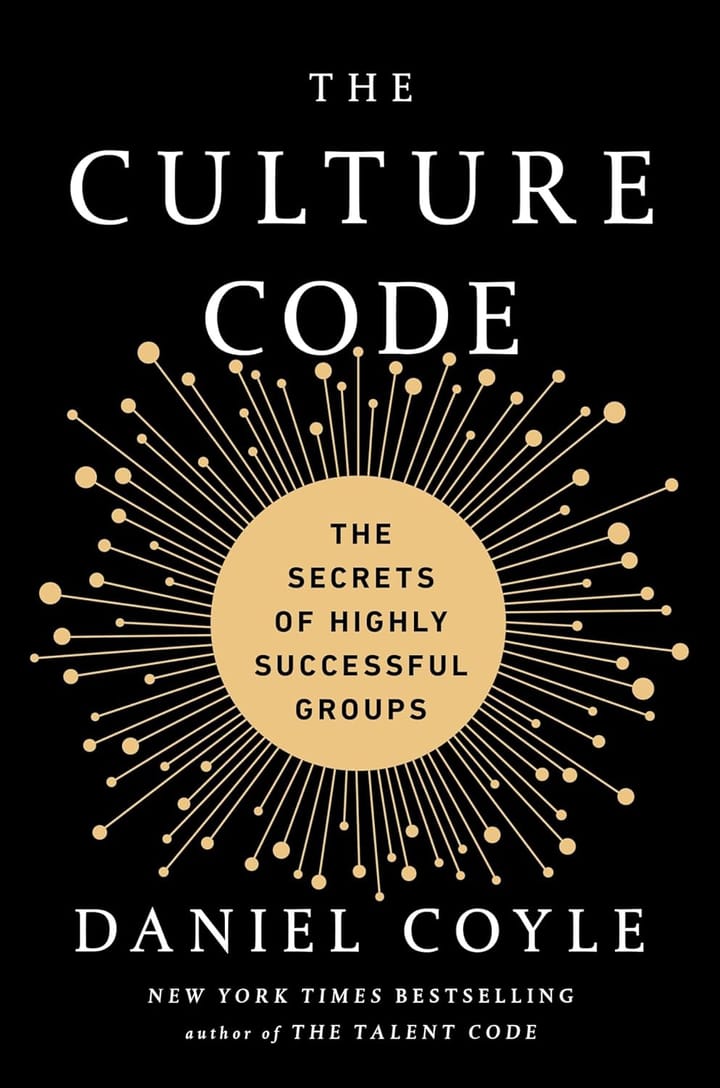Book Summary: Pivot
Discover how to navigate career changes and find your passion with Jenny Blake's book Pivot. Learn key strategies and insights in our summary.

Essential Insights
- Jenny Blake emphasizes the importance of embracing change and uncertainty in order to thrive in today's rapidly evolving world.
- Readers are encouraged to view career transitions as opportunities for growth and exploration, rather than setbacks or failures.
- By providing practical tools and strategies for navigating professional pivots, Pivot offers a roadmap for individuals seeking to create fulfilling and sustainable careers.
Introduction to Pivot
If you're looking to navigate transitions in your career or life more effectively, then Jenny Blake's book, Pivot, might just be the roadmap you need. In this insightful and practical guide, Jenny Blake, an experienced career coach and former Google employee, introduces a unique approach to managing change and embracing new opportunities. Through Pivot, Blake aims to equip readers with the tools they need to not just survive but thrive in times of transition.
For individuals seeking to enhance their leadership skills and personal development, Pivot offers a treasure trove of wisdom and actionable strategies. By emphasizing the importance of strategic pivots—small shifts in mindset and actions that lead to significant changes—Blake empowers readers to proactively shape their future. Whether you're a seasoned professional looking to make a career leap or someone navigating a major life change, this book provides valuable insights and practical exercises to help you navigate uncertainty with confidence and clarity.
Summary of Pivot
Pivot by Jenny Blake addresses the idea of navigating change and making mindful transitions in both personal and professional life. The book emphasizes that change is a constant and offers practical guidance on how to approach shifts with confidence and clarity. Blake encourages readers to see change as an opportunity rather than a setback, providing tools and strategies to help individuals identify their strengths, explore new directions, and cultivate a mindset that is open to possibility.
One of the unique contributions of Pivot is Blake's blending of personal anecdotes with actionable advice, which resonates with readers on multiple levels. Unlike many self-help books that can feel prescriptive, Blake’s approach encourages readers to tailor strategies to their unique situations. She also introduces the concept of "the pivot method," which breaks down the process of change into manageable steps, making it accessible for anyone looking to navigate transitions or explore new opportunities. This personal touch, combined with a practical framework, distinguishes Pivot from other works in the genre.
The key points of Pivot serve as guides for readers looking to harness their potential during times of change. From recognizing when it's time to pivot to embracing uncertainty as a chance for growth, Blake's insights inspire action and reflection. She emphasizes the importance of building a support system and cultivating a mindset that welcomes change, setting the stage for ongoing personal and professional development. As the article unfolds, readers will find tools and resources that align with these principles, encouraging them to embark on their own journeys of growth and leadership.
Key Lessons From Pivot
Embracing Change as a Constant
One of the central themes of Pivot is the acceptance of change as a permanent aspect of life and work. Jenny Blake emphasizes that instead of resisting change, individuals should learn to embrace it. By cultivating a mindset open to adjusting paths and exploring new opportunities, readers can navigate transitions more smoothly. This lesson encourages a proactive attitude toward personal and professional growth.
Blake illustrates this concept through her own experiences of significant life changes, such as shifting from a corporate job to becoming an entrepreneur. She shares the story of her journey, highlighting the challenges she faced and the decisions that led her to embrace the uncertainty of change. Her journey serves as an encouragement for readers to view their transitions not as obstacles but as chances for discovery.
This lesson is significant because it helps individuals understand that change is not an enemy; rather, it can be a catalyst for growth. By reframing how we think about change, we can unlock new potential and opportunities in our lives. This shift in mindset can inspire readers to step outside their comfort zones and pursue paths that resonate with their true passions.
The Power of Curiosity
Blake encourages readers to dive deep into their interests and explore what truly excites them. She shares examples of how curiosity led her to uncover unexpected career avenues and passions. By nurturing curiosity, one can unearth hidden talents and desires that may have been overlooked in a more rigid mindset.
The significance of this lesson lies in its potential to expand one’s horizons. Curiosity can propel individuals forward, allowing them to explore new territories in both career and personal endeavors. By embracing curiosity, readers can cultivate a more fulfilling and engaging life, leading to greater satisfaction in every endeavor.
Building a Support Network
Another key lesson in Pivot is the importance of cultivating a strong support network. Blake discusses how connections with others can offer guidance, encouragement, and new opportunities during transitional phases. The idea is that having a community or mentors can significantly ease the process of change and provide valuable insights that enrich one’s journey.
In sharing her own experience, Blake highlights the mentors who have influenced her career trajectory and how their advice helped her navigate tricky decisions. This emphasizes the value of seeking out relationships that can provide not just support but also constructive feedback. Building a network fosters collaboration and can lead to unforeseen opportunities as well.
This lesson inspires readers to recognize the value of relationships in their professional lives. A solid network can be a source of motivation and support, enabling individuals to share their challenges and celebrate their successes. By investing time and effort into their connections, readers can create a foundation that enriches both their personal and professional endeavors.
Action Over Perfection
Blake discusses the idea that taking action, even if it isn't perfect, is more beneficial than waiting for the "ideal" moment. She encourages readers to prioritize making progress rather than getting bogged down by the need for flawless execution. This shift in focus can alleviate pressure and promote a more dynamic approach to achieving goals.
Blake's own experiences with starting her own business exemplify this lesson. She faced many uncertain moments but learned that taking small, imperfect steps often led to significant outcomes. By sharing her journey, she illustrates that there’s great value in starting small and iterating along the way, which encourages others to adopt a similar mentality when faced with challenges.
This lesson holds the potential for immense change, as it can empower individuals to push past their fears of inadequacy. By embracing the concept of "good enough" as a path to progress, readers can cultivate a growth orientation, leading to new accomplishments and innovations in their lives and careers.
Application Ideas for Pivot
Identify Your Strengths
One of the key concepts in Pivot is recognizing your unique strengths and how they can guide your career decisions. To apply this, start by conducting a personal inventory. List out your skills, experiences, and aspects of past roles that you enjoyed the most. This list will serve as a foundation for understanding where you can add the most value in your current situation or future opportunities.
Implementing this step in daily life can be straightforward. Take 15 minutes every week to reflect on your accomplishments and the skills you used to achieve them. You can also ask for feedback from colleagues or mentors who appreciate your work ethic and contributions, as they can highlight strengths you may not recognize in yourself. This external perspective can help clarify your capabilities further.
Additionally, consider these strengths in team settings. By applying your unique skills to group projects, you can contribute significantly and encourage others to do the same. This collaborative effort can enhance team dynamics and overall output, ensuring everyone feels valued and effective. For instance, if creative problem-solving is one of your strengths, take the lead in brainstorming sessions to help direct the team creatively.
Embrace Change
Another important takeaway from the book is the necessity of embracing change as an opportunity rather than a setback. To put this into action, start by altering your mindset. Instead of fearing change, practice seeing it as a chance for growth. You can initiate this subtle shift by consciously reframing negative thoughts about change into reactive, positive responses. For example, instead of thinking, "I’m losing my job security," consider, "This change could open new doors for me."
To support this mindset shift, create a list of potential benefits that change can bring to your life or career. By focusing on the silver linings, you empower yourself to take initiatives in adapting to new situations more readily. Use journaling as a tool to document these thoughts and visualize the outcomes. The act of writing can reinforce a positive attitude towards upcoming challenges.
A practical application of this principle is to volunteer for new projects or roles that may initially seem uncomfortable. By stepping outside your comfort zone, you’ll find that you can adapt and overcome challenges. For instance, if your company is transitioning to new software, volunteering to be part of the implementation team not only exposes you to a new environment but can also position you as a valuable team player.
Network Strategically
Building a strong and relevant network is crucial for career advancement, as emphasized in Pivot. Begin by identifying key individuals within your industry or area of interest. Make a list of those who possess experience or insight that aligns with your career goals. This exercise simplifies the process of building relationships and helps you focus your networking efforts where they will have the most significant impact.
In your day-to-day life, set a goal to connect with one new person each week, whether through social media, professional events, or informal interactions. Start conversations with shared interests, and express your curiosity about their experiences. This approach not only expands your network but also allows you to gain fresh viewpoints and advice that can inform your career decisions.
Additionally, offer support to those in your network whenever possible. Relationships are mutually beneficial; hence, providing help or sharing resources can strengthen bonds. For example, if a contact is seeking advice on a particular project, share what you know or connect them with someone who can help. This reciprocity solidifies your position within your network and signals that you are an active participant willing to invest time and effort in relationships.
Set Mini-Goals
Pivot encourages setting smaller, achievable goals as a way to navigate significant life changes. Begin by breaking down your exploration into bite-sized tasks that move you toward your larger vision. For instance, if you aspire to switch industries, set a monthly goal to research one new field, attend related workshops, or connect with a professional working in that area.
This practice makes the daunting prospect of career change more manageable. Share your goals with an accountability partner or mentor who can help support your progress. By having someone check in on your goals, you create a system of encouragement that can foster motivation and commitment.
Moreover, leverage tools like vision boards or project management apps to visually track your progress. Celebrate your achievements, no matter how small, as these victories propel you forward and reinforce your ability to adjust and adapt effectively. For example, completing a relevant online course could be one of these mini-goals. This not only builds your experience but also adds to your resume, making your transition smoother and more credible to future employers.
Concluding Thoughts
Jenny Blake's Pivot presents a profound exploration of how to effectively manage change in both personal and professional arenas. Throughout the article, key lessons are drawn from Blake’s experiences and insights, emphasizing the importance of embracing change, fostering curiosity, and building a supportive network. Each of these lessons encourages a proactive mindset that views transitions as chances for growth rather than obstacles to overcome. The article highlights that change is an inescapable part of life, urging readers to embrace it fully. By adjusting their perspectives and regarding uncertainty as a springboard for discovery, individuals can unlock new potentials and navigate their journeys more adeptly.
Curiosity serves as a valuable tool in this process, empowering individuals to explore undiscovered opportunities and passions, thus fostering personal innovation. Another significant point raised is the necessity of developing a strong support network. Blake emphasizes that connections with mentors and peers can provide invaluable guidance during times of transition. Through her own experiences, she illustrates how these relationships can positively influence decisions and offer encouragement when facing challenges. Taking action is also emphasized as a vital component. Blake encourages readers to pursue progress rather than perfection, advocating for small, consistent steps that can lead to meaningful outcomes. This gradual approach enables individuals to overcome fears and embrace a mindset focused on growth.
To apply these principles, readers are encouraged to identify their strengths and set achievable goals. By engaging in reflection and seeking external feedback, individuals can recognize the unique contributions they can make while strategically expanding their networks for career advancement. Dividing larger ambitions into manageable tasks allows for sustained motivation and reassurance throughout the journey. This book ultimately serves as a guiding light for anyone grappling with change. Its combination of personal stories and actionable advice makes it an enduring resource for those looking to harness their potential during transitions. As you navigate your own personal and professional journeys, take these lessons from Pivot to heart. Embrace change, cultivate curiosity, strengthen your support system, and take decisive action toward your goals. Empower yourself to view change as an opportunity for growth, and embark on your own journey of exploration and development. The possibilities are endless, and your next pivot could be the start of something remarkable.
Related Topics
- Career transitions - Exploring different career paths and making changes in your professional life.
- Entrepreneurship - Starting and running a business, which may involve pivoting in response to market feedback.
- Personal development - Growing and evolving as an individual, which can involve taking intentional steps to pivot towards your goals.
- Work-life balance - Finding harmony between your work responsibilities and personal life, which may require making strategic shifts to create a more fulfilling lifestyle.
Reflection & Discussion Questions
Reflection is a powerful tool for personal growth and leadership development. Whether you're exploring your own experiences or engaging in thoughtful group discussion or team training, reflection questions help uncover new insights, clarify values, and inspire meaningful action. Below are questions designed to deepen your understanding of the concepts taught in Pivot, and facilitate constructive conversations with your team or group.
- How can you apply the concept of embracing change as a constant in your personal and professional life?
- What steps can you take to foster curiosity and explore new opportunities in your career?
- How can you build a strong support network to guide you through transitions and challenges?
- In what ways can you prioritize action over perfection in your approach to achieving goals?
- How can you identify and leverage your unique strengths to guide your career decisions?
- What mindset shifts can you make to embrace change as an opportunity for growth rather than a setback?
- How can you strategically network to advance your career goals and gain valuable insights?
- What mini-goals can you set to navigate significant life changes and move towards your larger vision?
- How can you celebrate and reinforce your progress towards achieving your goals, no matter how small?
- How can you adjust your perspective on challenges to see them as opportunities for growth and skill development?
- What hidden talents or passions can you uncover by nurturing your curiosity and exploring new interests?
- Who are the key individuals in your network that align with your career goals, and how can you build stronger relationships with them?
- How can you tailor the concepts of "the pivot method" to suit your unique circumstances and goals?
- What small, imperfect steps can you take today to make progress towards your larger goals and aspirations?
- Reflect on a recent change or transition in your life - how did you approach it, and what was the outcome?
Recommended Reading
Below are a few recommended books related to concepts taught in Pivot.
- Designing Your Life: How to Build a Well-Lived, Joyful Life by Bill Burnett and Dave Evans. A guide on how to use design thinking principles to create a fulfilling life and career.
- Reinventing You: Define Your Brand, Imagine Your Future by Dorie Clark. Tips on how to reinvent yourself and cultivate a personal brand in order to achieve your career goals.
- The Dip: A Little Book That Teaches You When to Quit (and When to Stick) by Seth Godin. A book that helps readers navigate the tough choices of when to persevere and when to pivot in their pursuits.
Frequently Asked Questions
What is the Pivot Method?
The Pivot Method is a four-step process outlined in Jenny Blake's book Pivot that helps individuals navigate through moments of change and transition in their personal and professional lives. This method involves gaining clarity on your current situation, exploring different options and alternatives, making a decision on which direction to take, and then taking action towards your new goals. By utilizing the Pivot Method, individuals can approach change with a proactive mindset and create a plan to help them pivot successfully.
What are some signs that it may be time to pivot in your career?
Some signs that it may be time to pivot in your career include feeling unfulfilled or stagnant in your current job, having a lack of motivation or passion for your work, or consistently feeling overwhelmed or mentally drained. If you find yourself daydreaming about other career paths or feeling like you are not living up to your full potential, these could also be indicators that a change is needed. Remember, it's okay to pivot and pursue a different path if your current career is no longer bringing you joy or satisfaction.
How can I effectively manage fear and self-doubt during a career transition?
To effectively manage fear and self-doubt during a career transition, it is important to acknowledge these feelings and understand that they are a natural part of the process. You can counteract these negative emotions by practicing self-care, seeking support from friends and family, and staying focused on your goals. Remember that it is okay to feel afraid or uncertain, but it is important to continue moving forward regardless.
How can I differentiate between a pivot and a temporary detour?
A pivot is a strategic shift in a new direction based on what you've learned about yourself and your goals. It is a deliberate decision to change your course of action in order to better align with your values and passions. On the other hand, a temporary detour is a diversion from your original path that does not fundamentally change your direction. It may involve taking a break or exploring new opportunities, but ultimately you will still continue on your original path. By reflecting on what truly excites and fulfills you, you can determine whether a change is necessary for growth or simply a temporary deviation.
Affiliate Disclaimer
Some of the links on this website may be affiliate links. This means that, at no additional cost to you, we may earn a commission if you click through and make a purchase. Your support through these affiliate links helps sustain and improve the quality of the content we provide.



